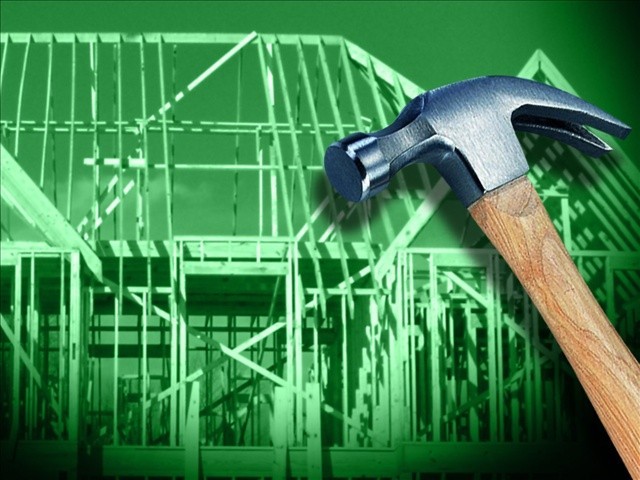The brighter sales outlook is the latest sign pointing to a sustained pickup in construction in coming months and comes as applications for permits to build single-family houses are at a five-year high.
The National Association of Home Builders/Wells Fargo builder sentiment index released Thursday jumped to 59 this month from 56 in July. It was the fourth consecutive monthly gain.
A reading above 50 indicates more builders view sales conditions as good, rather than poor.
The last time the reading was above 59 was in November 2005, when it was 61. U.S. sales of new homes peaked in July that year.
Measures of current sales conditions and builders' outlook for single-family home sales over the next six months each increased to their highest levels in at least seven years. Builders' gauge of traffic by prospective buyers was unchanged.
HOME FORECLOSURES NEARING 6-YR. LOW
Meanwhile, the country is on track to end the year with the fewest homes repossessed by lenders in six years, a trend that should help limit the negative impact foreclosures have on home values.
Lenders repossessed 36,964 U.S. homes last month, down 31 percent from July last year, foreclosure listing firm RealtyTrac Inc. said Thursday.
At the monthly average pace through July, completed foreclosures are projected to total nearly 490,000 this year, down roughly 27 percent from last year, the firm said. That's also the lowest since 2007, when 404,849 homes were taken back by banks.
Foreclosures peaked in 2010 at 1.05 million and have been declining ever since. The trend has been accelerating as U.S. home prices have increased amid a resurgent housing market, steady job gains and still-low mortgage interest rates.
The foreclosure pipeline is also getting thinner on the front end.
Lenders initiated the foreclosure process on 60,601 homes in July, down 38 percent from a year earlier, RealtyTrac said.
Foreclosure starts and the number of homes repossessed by banks each increased 6 percent and 4 percent, respectively, from June. But annual increases, which are more telling of the long-term trend, occurred in less than half of the states.

http://accesswdun.com/article/2013/8/264541
